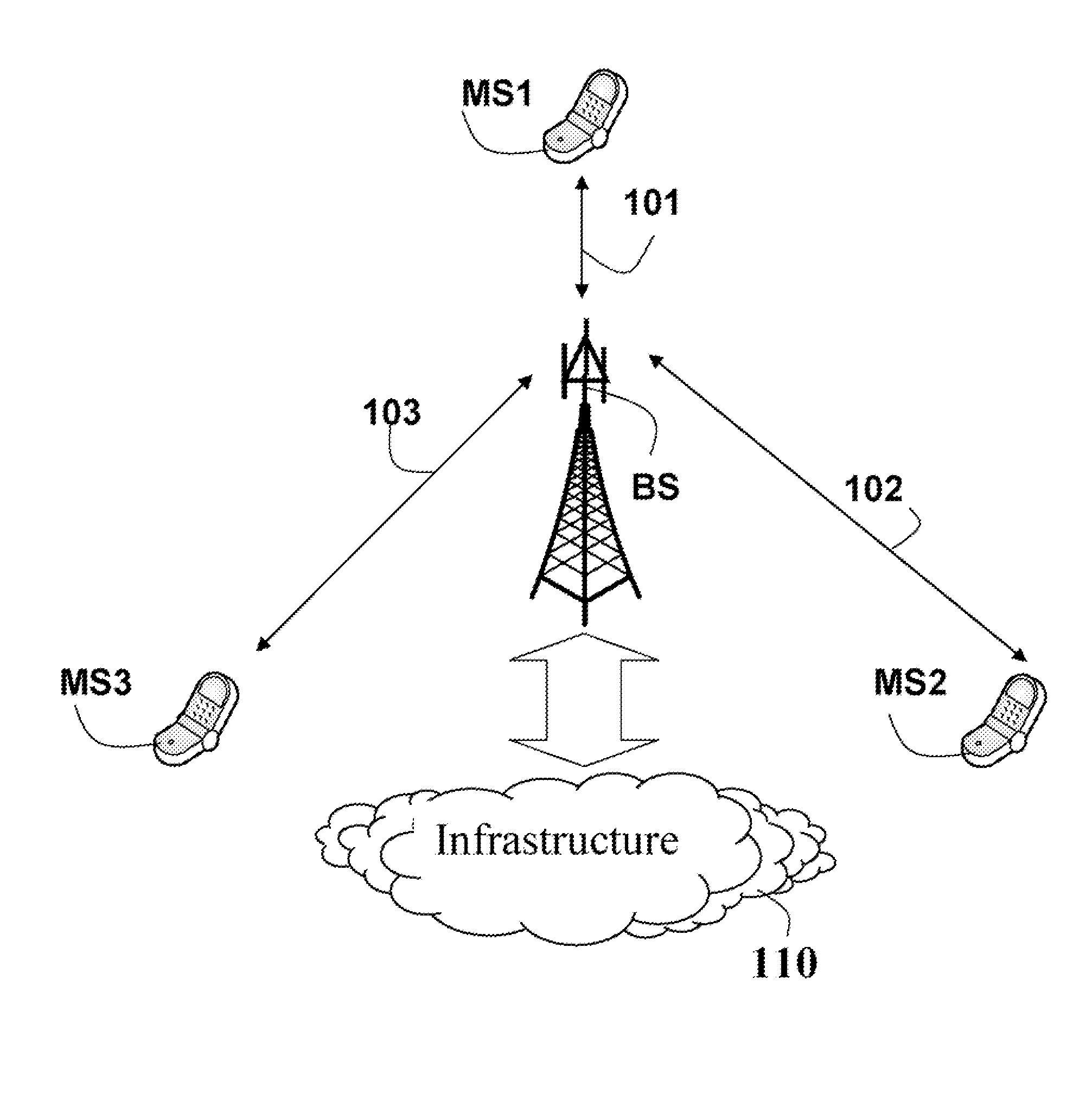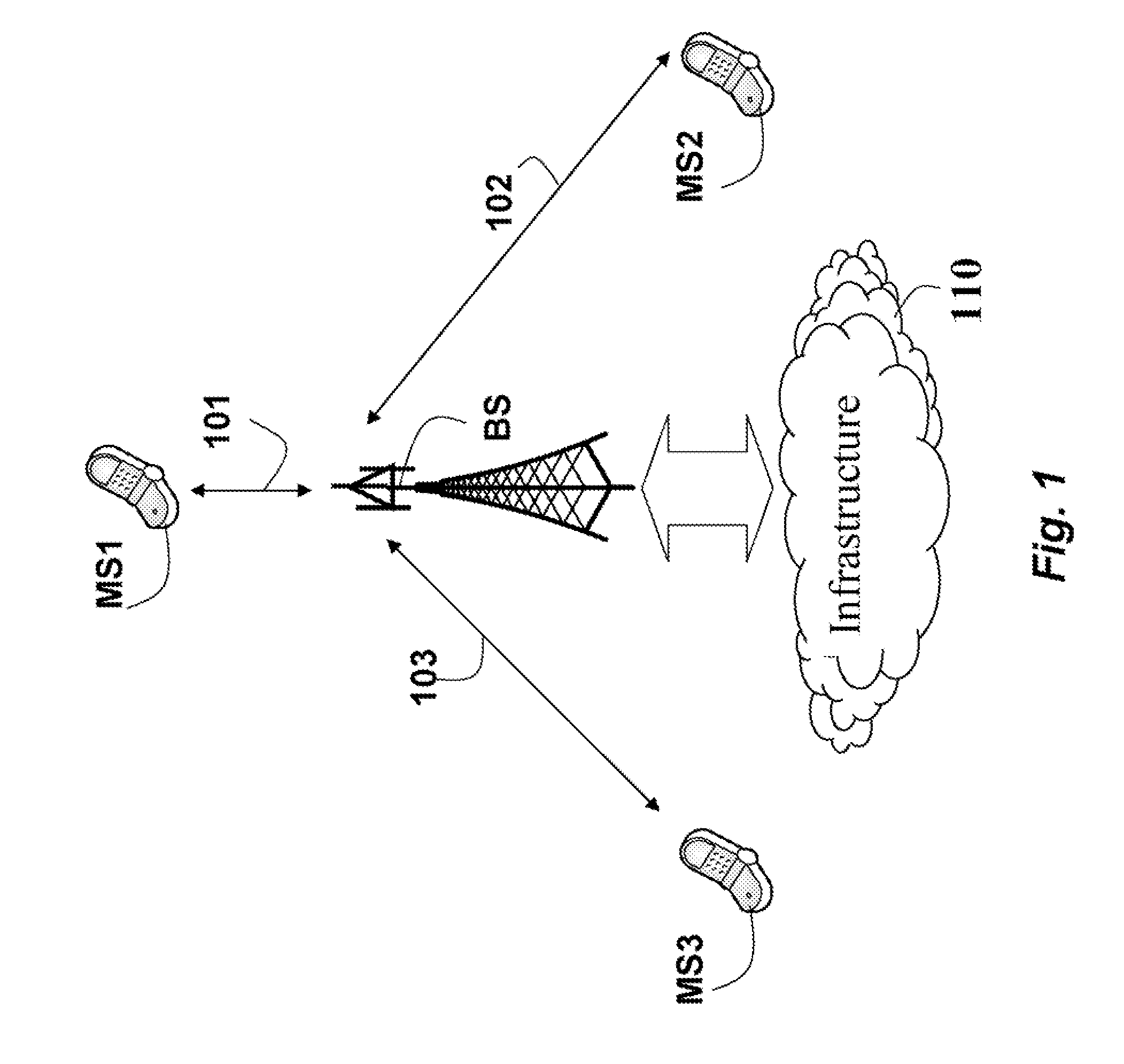Method and System for Selecting Antennas Adaptively in OFDMA Networks
- Summary
- Abstract
- Description
- Claims
- Application Information
AI Technical Summary
Problems solved by technology
Method used
Image
Examples
Embodiment Construction
[0037]The following terms are defined and used herein.
[0038]AAS zone: Adaptive antenna system (AAS) is an option for an IEEE 802.16 network and is defined in the standards. AAS uses multiple antenna elements to improve system coverage and capacity by directing antenna radiation to individual MS. AAS is able to steer radiation beams spatially and achieve high spectral reuse and enhanced diversity gain. AAS zone is a period of time that is dedicated for AAS-supported MSs during each frame.
[0039]Non-AAS zone: Non-AAS zone is a time period in each frame, which is used for non-AAS MSs.
[0040]Slot: A slot is the minimum resource unit allocated to an MS in UL and DL. A slot is two dimensional and is measured in time duration and frequency subcarriers.
[0041]Antenna Selection (AS): AS is used during transmitting and receiving at the MS or the BS to optimize the system performance. AS can be classified into Transmit Antenna Selection (TAS) and Receive Antenna Selection (RAS), which are intende...
PUM
 Login to View More
Login to View More Abstract
Description
Claims
Application Information
 Login to View More
Login to View More - R&D
- Intellectual Property
- Life Sciences
- Materials
- Tech Scout
- Unparalleled Data Quality
- Higher Quality Content
- 60% Fewer Hallucinations
Browse by: Latest US Patents, China's latest patents, Technical Efficacy Thesaurus, Application Domain, Technology Topic, Popular Technical Reports.
© 2025 PatSnap. All rights reserved.Legal|Privacy policy|Modern Slavery Act Transparency Statement|Sitemap|About US| Contact US: help@patsnap.com



